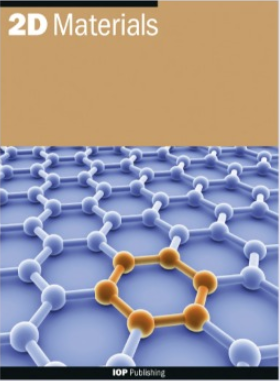Enhancing pseudocapacitive intercalation in Ti3C2Tx MXene with molecular crowding electrolytes
IF 4.3
3区 材料科学
Q2 MATERIALS SCIENCE, MULTIDISCIPLINARY
引用次数: 0
Abstract
Abstract The growing demand for safe, cost-efficient, high-energy and high-power electrochemical energy storage devices has stimulated the development of aqueous-based supercapacitors with high capacitance, high rate capability, and high voltage. 2D titanium carbide MXene-based electrodes have shown excellent rate capability in various dilute aqueous electrolytes, yet their potential window is usually narrower than 1.2 V. In this study, we show that the potential window of Ti 3 C 2 T x MXene can be efficiently widened to 1.5 V in a cost-effective and environmentally benign polyethylene glycol (PEG) containing molecular crowding electrolyte. Additionally, a pair of redox peaks at −0.25 V/−0.05 V vs. Ag (cathodic/anodic) emerged in cyclic voltammetry after the addition of PEG, yielding an additional 25% capacitance. Interestingly, we observed the co-insertion of the molecular crowding agent PEG-400 during the Li + intercalation process based on in-situ x-ray diffraction analysis. As a result, Ti 3 C 2 T x electrodes presented an interlayer space change of 4.7 Å during a complete charge/discharge cycle, which is the largest reversible interlayer space change reported so far for MXene-based electrodes. This work demonstrates the potential of adding molecular crowding agents to improve the performance of MXene electrodes in aqueous electrolytes and to enlarge the change of the interlayer spacing.用分子拥挤电解质增强Ti3C2Tx MXene中的假电容插层
对安全、高性价比、高能量、大功率的电化学储能装置的需求日益增长,刺激了高电容、高倍率、高电压的水基超级电容器的发展。2D碳化钛mxene基电极在各种稀水电解质中表现出优异的倍率性能,但其电位窗口通常小于1.2 V。在这项研究中,我们证明了在一种具有成本效益和环境友好的聚乙二醇(PEG)分子拥挤电解质中,Ti 3 C 2 T x MXene的电位窗口可以有效地扩大到1.5 V。此外,在循环伏安法中,添加PEG后,在−0.25 V/−0.05 V vs. Ag(阴极/阳极)处出现一对氧化还原峰,产生额外25%的电容。有趣的是,基于原位x射线衍射分析,我们在Li +嵌入过程中观察到分子拥挤剂PEG-400的共插入。结果表明,在一个完整的充放电循环中,ti3c2tx电极的层间空间变化为4.7 Å,这是迄今为止报道的基于mxene电极的最大可逆层间空间变化。这项工作证明了添加分子拥挤剂可以改善MXene电极在水溶液中的性能,并扩大层间距的变化。
本文章由计算机程序翻译,如有差异,请以英文原文为准。
求助全文
约1分钟内获得全文
求助全文
来源期刊

2D Materials
MATERIALS SCIENCE, MULTIDISCIPLINARY-
CiteScore
10.70
自引率
5.50%
发文量
138
审稿时长
1.5 months
期刊介绍:
2D Materials is a multidisciplinary, electronic-only journal devoted to publishing fundamental and applied research of the highest quality and impact covering all aspects of graphene and related two-dimensional materials.
 求助内容:
求助内容: 应助结果提醒方式:
应助结果提醒方式:


